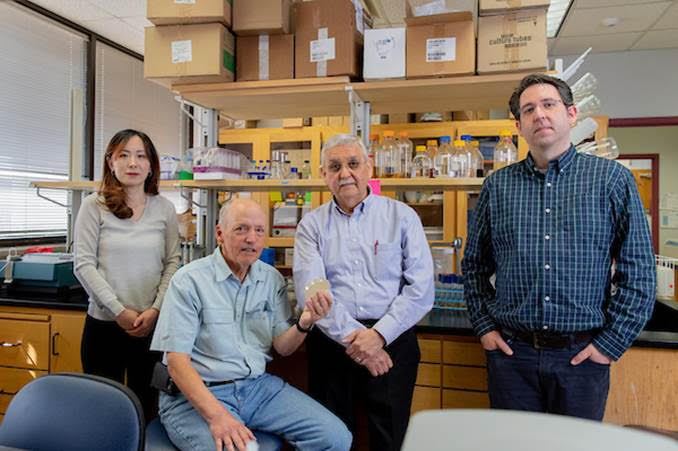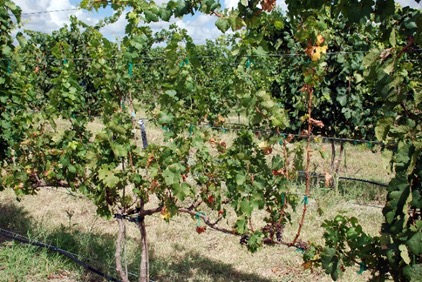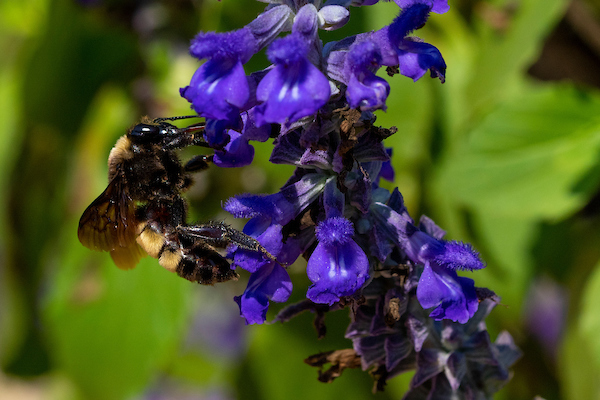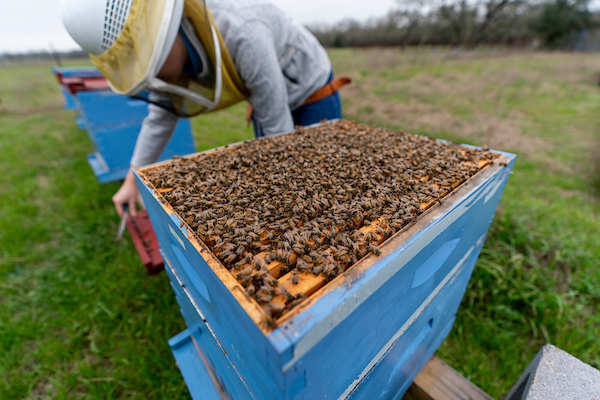Texas A&M AgriLife Research develops bacteriophage treatment for Pierce’s disease
World’s first organic treatment for Pierce’s disease in grapevines
A Texas A&M AgriLife Research study has led to the discovery of the first curative and preventive bacteriophage treatment against the pathogen Xylella fastidiosa, which causes the deadly Pierce’s disease in grapevines.

A bacteriophage therapy is a precision treatment of bacterial infections that use viruses that only infect and kill the bacterium. Bacteriophages are considered a promising alternative to antibiotics for treating infections in humans, animals and plants.
The work to develop a bacteriophage treatment for Pierce’s disease was led by Carlos Gonzalez, Ph.D., Texas A&M College of Agriculture and Life Sciences Department of Plant Pathology and Microbiology professor, and member of the Texas A&M AgriLife Center for Phage Technology in collaboration with Otsuka Pharmaceutical Co., Ltd.
The treatment has been approved by the U.S. Environmental Protection Agency, EPA, with the commercial name XylPhi-PD, is registered with the California Department of Pesticide Regulation, CDPR, and is approved for use in organic production by the Organic Materials Review Institute, OMRI. The product is now marketed in the U.S. by Otsuka subsidiary A&P Inphatec, LLC.
“The development of this first-ever bacteriophage treatment for Pierce’s disease is a significant step for the agricultural industry,” Gonzalez said. “We’ve proven that we’re able to develop a treatment, manufacture the product and put it into large-scale production, and develop it to a point where it’s been approved by the EPA as a treatment for Pierce’s disease.”
About Pierce’s disease
Pierce’s disease is a problem in vineyards across the U.S. and parts of Europe.
Insects such as sharpshooters, which feed on the sap of grapevines, infect the plant with the pathogen and spread the disease vine-to-vine. In warm and arid climates in places like California, Pierce’s disease spreads efficiently, causing large-scale damage.
XylPhi-PD is an injectable treatment that targets the disease from within the plant’s vascular system, helping to cure the infected grapevine and stopping the spread to surrounding vines.
Curating an organic treatment
Otsuka Pharmaceutical partnered with AgriLife Research in 2010 to develop a bacteriophage treatment for Pierce’s disease.
“Developing a bacteriophage treatment was ideal because it’s an organic remedy that works to cure the plant from within — rather than a pesticide that’s meant to kill insects that vector the pathogen,” Gonzalez said.
Although insecticides can be used to control the insect vectors that spread the disease, these substances can have deleterious effects on non-target beneficial insects such as honeybees.
Future applications for bacteriophage treatments
The Texas A&M Center of Phage Technology is researching bacteriophage therapies for foodborne illnesses and antibiotic resistant infections, in animals and humans.
“As humans are faced with antibiotic resistance, we’re looking for alternative therapies, and phages are among the most promising emerging technologies in medicine,” Gonzalez said. “Bacteriophage therapies will also have a major impact on agricultural sustainability, as they’ll allow us to implement more ethical practices and growing techniques that are good for the plant and the environment.”
Research Notes
- A virtual field day was held in Northern California at the end of the 2020 crop season to share important efficacy data at leading vineyards. After two seasons of use, XylPhi-PD reduced Pierce’s disease by almost 60% in high-disease-pressure vineyards.
- Since the release of the discovery, Gonzalez has spoken at the Enoforum USA meeting for recent advancements and innovations in the wine and grape industry.







